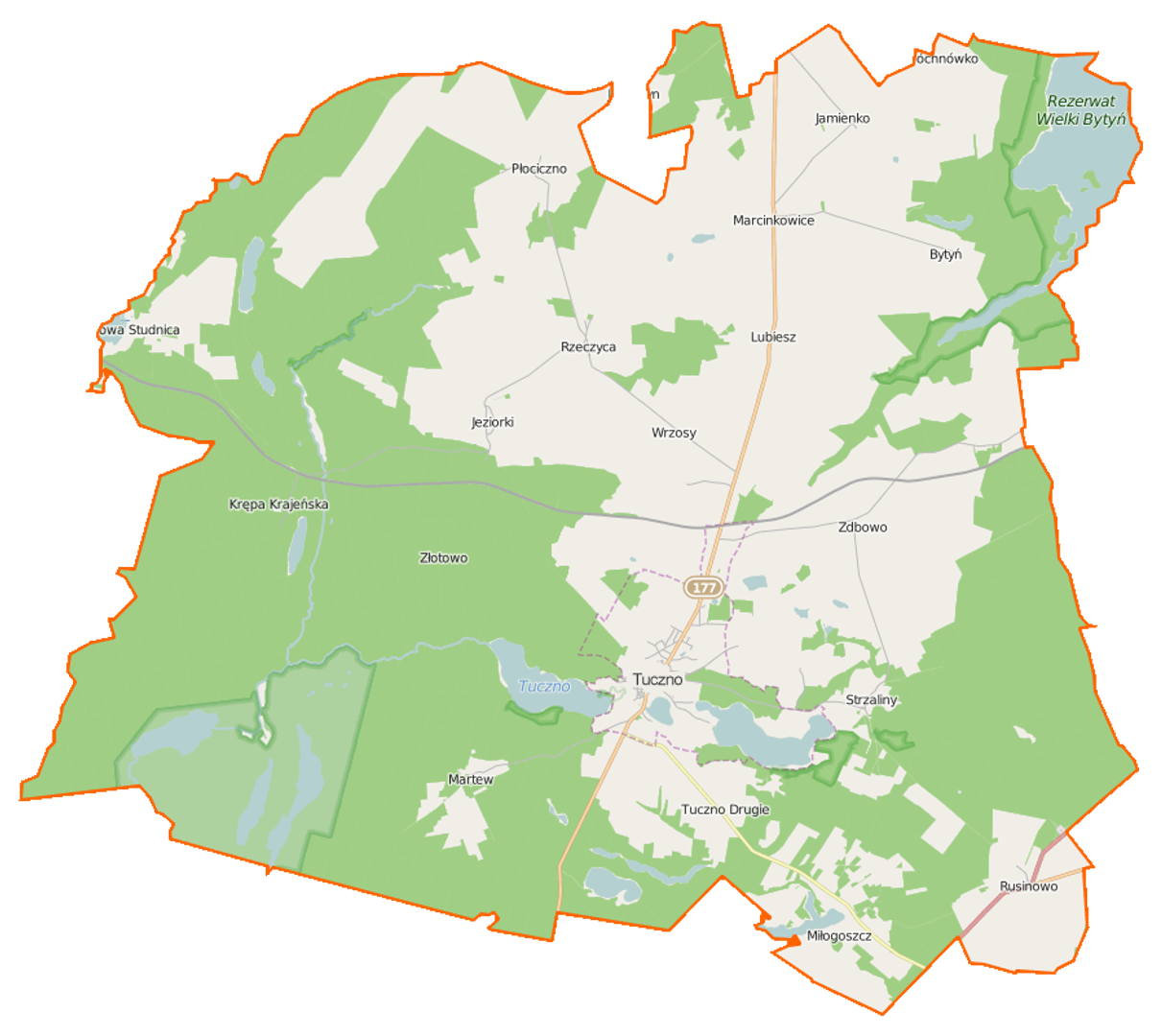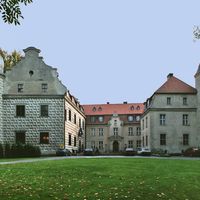Tuczno
7.36

Overview
The Tuczno Commune, located in the southeastern part of the West Pomeranian Voivodeship, is an urban-rural municipality in the Wałcz County, with its capital in the town of Tuczno. According to data from 2019, the commune has 4,890 inhabitants, which constitutes 9.3% of the county's population. The commune's area covers 17.7% of Wałcz County, bordering the communes of Człopa, Mirosławiec, Wałcz, as well as Drawno and Kalisz Pomorski. Administratively, the commune belonged to the Piła Voivodeship between 1975 and 1998. Demographically, the commune is characterized by a low population density of 20.1 people per km², with 44% of its area covered by forested land. An important natural area is the Drawieński National Park and the Wielki Bytyń Nature Reserve. In terms of architecture, a notable landmark in the commune is Tuczno Castle, whose construction began in 1338. The castle, known for its transformations over the centuries, was originally a fortress and later a palace residence. In the 18th century, it acquired its current appearance, but after the war, it fell into ruin until its reconstruction between 1966 and 1976. Today, it houses a conference and training center. The commune consists of 13 village administrative districts (sołectw), and road transport is provided by, among others, national road No. 22 and several voivodeship roads. Tuczno Commune is also accessible by rail; it previously had the "Tuczno Krajeńskie" station, which resumed connections in 2012. An interesting fact is that the residents of Tuczno have the right to influence the selection of their representatives to the county council and the voivodeship assembly. The commune's nature, with its vast forested areas and lakes, promotes tourism, and the local authorities collect fees from tourists. The commune enjoys a unique combination of rich history, picturesque landscapes, and active community life, making it an interesting place to visit and live.
Location
County
Drawsko County
Country
You can also find here:
2025 Wizytor | All Rights Reserved
